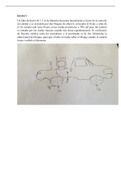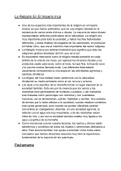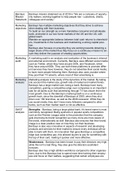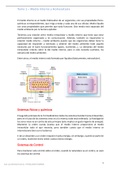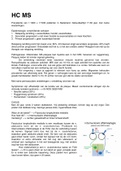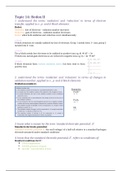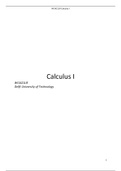Celso de Mello Donegá Editor
Nanoparticles
Workhorses of Nanoscience
,Nanoparticles
,Celso de Mello Donegá
Editor
Nanoparticles
Workhorses of Nanoscience
123
,Editor
Celso de Mello Donegá
Debye Institute for Nanomaterials Science
Utrecht University
Utrecht
The Netherlands
ISBN 978-3-662-44822-9 ISBN 978-3-662-44823-6 (eBook)
DOI 10.1007/978-3-662-44823-6
Library of Congress Control Number: 2014952448
Springer Heidelberg New York Dordrecht London
© Springer-Verlag Berlin Heidelberg 2014
This work is subject to copyright. All rights are reserved by the Publisher, whether the whole or part of
the material is concerned, specifically the rights of translation, reprinting, reuse of illustrations,
recitation, broadcasting, reproduction on microfilms or in any other physical way, and transmission or
information storage and retrieval, electronic adaptation, computer software, or by similar or dissimilar
methodology now known or hereafter developed. Exempted from this legal reservation are brief
excerpts in connection with reviews or scholarly analysis or material supplied specifically for the
purpose of being entered and executed on a computer system, for exclusive use by the purchaser of the
work. Duplication of this publication or parts thereof is permitted only under the provisions of
the Copyright Law of the Publisher’s location, in its current version, and permission for use must always
be obtained from Springer. Permissions for use may be obtained through RightsLink at the Copyright
Clearance Center. Violations are liable to prosecution under the respective Copyright Law.
The use of general descriptive names, registered names, trademarks, service marks, etc. in this
publication does not imply, even in the absence of a specific statement, that such names are exempt
from the relevant protective laws and regulations and therefore free for general use.
While the advice and information in this book are believed to be true and accurate at the date of
publication, neither the authors nor the editors nor the publisher can accept any legal responsibility for
any errors or omissions that may be made. The publisher makes no warranty, express or implied, with
respect to the material contained herein.
Printed on acid-free paper
Springer is part of Springer Science+Business Media (www.springer.com)
,To Lourdes and Vanessa
,Preface
The investigation of nanoscale phenomena and nanomaterials (i.e., Nanoscience)
has become one of the most dynamic and interdisciplinary fields in contemporary
science, and continues to develop at an astounding rate and in many different
directions. Nanoscience is also attracting a growing interest from the general public,
as Nanotechnology has been hailed one of the key technologies of the twenty-first
century. This intense activity produces vast amounts of new knowledge on a daily
basis, which are periodically condensed in authoritative and up-to-date reviews and
books covering selected topics within Nanoscience. Nevertheless, the field pro-
gresses so fast that topic reviews are needed at increasingly shorter time intervals!
Nanoscience is also a dynamic cross-road of many disciplines, and, as a result, its
topics do not have sharp boundaries and are continuously evolving and changing.
Although this is exactly what makes Nanoscience a very fertile cradle for
groundbreaking ideas, it may be overwhelming and bewildering for students and
beginner researchers trying to grasp the essence of the field. For those, an intro-
ductory teaching textbook would be a great asset. However, introductory books to
Nanoscience, which are both general and sufficiently deep to be used as textbooks,
are scarce, albeit highly needed.
This book aims to address this need by using one particular class of nanomaterials
(viz., Nanoparticles) as an exemplary case from which all the fundamental principles
of Nanoscience can be derived. The essential feature of nanomaterials is that their
physical and chemical properties are size-dependent. Nanoparticles are perfectly
suited to illustrate and explain this principle, since they can be made in a variety of
sizes and shapes, and from a myriad of different materials ranging from metals to
insulators through semiconductors. Further, colloidal nanoparticles beautifully
demonstrate the multi- and cross-disciplinary character of Nanoscience, as they
integrate concepts from several disciplines within chemistry, physics, and biology
(e.g., colloidal science, coordination chemistry, organic chemistry, solid state
physics, photophysics, quantum mechanics, magnetism, and interfacial chemistry).
We will loosely interchange the terms “nanocrystal” (NC) and “nanoparticle” (NP)
throughout the book, even though they are not rigorously synonyms, as nanoparticles
also include amorphous materials such as silica.
vii
,viii Preface
This work is intended as a basic textbook for graduate students beginning in this
field and advanced undergraduate students in Chemistry, Physics, and Materials
Science. The overall structure of the book and the treatment of some of the topics
reflect my classroom experience teaching a course on Nanomaterials to senior
undergraduate students. This course has been taught for several years at Utrecht
University, together with some of the contributing authors of this book (de Jongh and
Vanmaekelbergh). The chapters are not intended as reviews of the recent scientific
literature, but instead convey a comprehensible coverage of the fundamental prin-
ciples of the subject matter. They also provide a flavor of the state-of-the-art and an
outlook on potential developments. Our approach is to emphasize the essential
concepts with the objective of developing student understanding. The topics are
addressed with conciseness, but without compromising effectiveness and depth.
Mathematics are kept to the minimum necessary to ensure proper understanding. For
more detailed or rigorous treatments the reader is referred to the literature. To
facilitate understanding and highlight the essential concepts, each chapter contains a
set of exercises. The student who masters this book will know what Nanoscience is
and why it is important, and will also understand its fundamental principles and be
able to integrate and combine concepts from different disciplines to address research
questions within Nanoscience.
The book can be roughly divided into three parts: fundamental physico-chemical
and physical principles of Nanoscience, chemistry and synthesis of nanoparticles,
and techniques to study nanoparticles. These parts are however strongly intercon-
nected and intermingled, with the fundamental principles forming a framework that
permeates through the whole book.
The first chapter is concerned with the origin of the size dependence of the
properties of nanomaterials, explaining it in terms of two fundamental nanoscale
effects. This chapter also serves as a general introduction to the book, briefly
addressing the definition and classification of nanomaterials and the techniques
used to fabricate and study them. Chapter 2 lays out the theoretical framework
within which to understand size effects on the properties of semiconductor nano-
crystals, with particular emphasis on the quantum confinement effect. The optical
properties of metal nanoparticles and metal nanostructures (periodic lattices) are
discussed in Chap. 3.
Chapter 4 is devoted to nanoporous materials, treating in detail their synthesis,
structure and functional properties, as well as the physical properties of liquids
confined in nanopores. The preparation methods, characterization techniques, and
applications of supported nanoparticles are covered in Chap. 5. Chapter 6 presents
the essential physical-chemical concepts needed to understand the preparation of
colloidal inorganic nanoparticles, and the remarkable degree of control that has
been achieved over their composition, size, shape and surface.
The last four chapters are dedicated to a few selected characterization techniques
that are very valuable tools to study nanoparticles. Chapter 7 concentrates on
electron microscopy techniques, while Chap. 8 focuses on scanning probe
microscopy and spectroscopy. Electron paramagnetic resonance (EPR) based
spectroscopic techniques and their application to nanoparticles are explored in
,Preface ix
Chap. 9. Finally, Chap. 10 shows how solution Nuclear Magnetic Resonance
(NMR) spectroscopic techniques can be used to unravel the surface chemistry of
colloidal nanoparticles.
We have attempted to cover as much as possible of the broad field of Nanoparticles,
but had no intention of producing a comprehensive and exhaustive treatise. To
keep the length of the book manageable, some topics are not addressed in detail. The
most noticeable examples are no doubt superlattices and nanomagnetism, which are
briefly mentioned, but not treated in any detail. Further, very actual issues, such as
charge transport and multiexciton generation (MEG), are also not discussed. This
should not be seen as deliberate omissions from our part, but rather as necessary
compromises for the sake of conciseness. These topics are still contained in the book,
but the reader is referred to recent literature for a comprehensive treatment.
Most of the excitement about Nanoscience originates from the potential of
nanomaterials to lead to a dazzling multitude of applications (e.g., solar energy
conversion, optoelectronics, nanophotonics, spintronics, smart catalysts, biomedical
applications, etc.). Therefore, it is perhaps surprising that the potential and current
applications of nanoparticles are only briefly addressed in this book. This choice
was motivated both by our desire to keep the book concise and by the fact that the
field is developing so rapidly that the applications section of the book would soon
be outdated. In contrast, the fundamental concepts will remain valid, despite the
further growth of the field. Our treatment of the applications of nanoparticles should
thus be regarded as a blurred snapshot of a fast-moving object. We have made no
attempt to sharpen the image, but instead tried to describe it in general terms,
highlighting the essential concepts behind the scene. We have left it up to the reader
to follow the references provided and fill in the fine details, which are bound to
change as progress is made.
In conclusion, it is my pleasant duty to thank all contributors for investing their
valuable time into writing exciting and instructive chapters for this book. Thanks
are also due to many generations of students for their valuable assistance in the
form of questions and remarks that have stimulated me (and certainly also the
contributing authors) to seek better ways to present the topics discussed here.
I would also like to express my gratitude to Mayra Castro at Springer for inviting
me to put together a textbook on Nanomaterials. At the time, it sounded like a very
challenging project, and I am glad I took up the challenge. Let us hope this book
fulfills its purpose of inspiring many new generations of students and guiding them
into the ever changing realms of Nanoscience.
Utrecht, July 2014 Celso de Mello Donegá
,Contents
1 The Nanoscience Paradigm: “Size Matters!” . . . . . . . . . . . . . . . . 1
Celso de Mello Donegá
2 Size Effects on Semiconductor Nanoparticles . . . . . . . . . . . . . . . . 13
Rolf Koole, Esther Groeneveld, Daniel Vanmaekelbergh,
Andries Meijerink and Celso de Mello Donegá
3 Metal Nanoparticles for Microscopy and Spectroscopy . . . . . . . . . 53
Peter Zijlstra, Michel Orrit and A. Femius Koenderink
4 Nanoporous Materials and Confined Liquids . . . . . . . . . . . . . . . . 99
Petra E. de Jongh and Tamara M. Eggenhuisen
5 Supported Nanoparticles . . . . . . . . . . . . . . . . . . . . . . . . . . . . . . . 121
Tamara M. Eggenhuisen and Petra E. de Jongh
6 The Challenge of Colloidal Nanoparticle Synthesis . . . . . . . . . . . . 145
Esther Groeneveld and Celso de Mello Donegá
7 Electron Microscopy Techniques . . . . . . . . . . . . . . . . . . . . . . . . . 191
Marijn A. van Huis and Heiner Friedrich
8 Scanning Probe Microscopy and Spectroscopy . . . . . . . . . . . . . . . 223
Peter Liljeroth, Bruno Grandidier, Christophe Delerue
and Daniël Vanmaekelbergh
9 Electron Paramagnetic Resonance Based Spectroscopic
Techniques . . . . . . . . . . . . . . . . . . . . . . . . . . . . . . . . . . . . . . . . . 257
Pavel G. Baranov, Nikolai G. Romanov, Celso de Mello Donegá,
Sergei B. Orlinskii and Jan Schmidt
xi
, xii Contents
10 Solution NMR Toolbox for Colloidal Nanoparticles . . . . . . . . . . . 273
Antti Hassinen, José C. Martins and Zeger Hens
Index . . . . . . . . . . . . . . . . . . . . . . . . . . . . . . . . . . . . . . . . . . . . . . . . 295
Nanoparticles
Workhorses of Nanoscience
,Nanoparticles
,Celso de Mello Donegá
Editor
Nanoparticles
Workhorses of Nanoscience
123
,Editor
Celso de Mello Donegá
Debye Institute for Nanomaterials Science
Utrecht University
Utrecht
The Netherlands
ISBN 978-3-662-44822-9 ISBN 978-3-662-44823-6 (eBook)
DOI 10.1007/978-3-662-44823-6
Library of Congress Control Number: 2014952448
Springer Heidelberg New York Dordrecht London
© Springer-Verlag Berlin Heidelberg 2014
This work is subject to copyright. All rights are reserved by the Publisher, whether the whole or part of
the material is concerned, specifically the rights of translation, reprinting, reuse of illustrations,
recitation, broadcasting, reproduction on microfilms or in any other physical way, and transmission or
information storage and retrieval, electronic adaptation, computer software, or by similar or dissimilar
methodology now known or hereafter developed. Exempted from this legal reservation are brief
excerpts in connection with reviews or scholarly analysis or material supplied specifically for the
purpose of being entered and executed on a computer system, for exclusive use by the purchaser of the
work. Duplication of this publication or parts thereof is permitted only under the provisions of
the Copyright Law of the Publisher’s location, in its current version, and permission for use must always
be obtained from Springer. Permissions for use may be obtained through RightsLink at the Copyright
Clearance Center. Violations are liable to prosecution under the respective Copyright Law.
The use of general descriptive names, registered names, trademarks, service marks, etc. in this
publication does not imply, even in the absence of a specific statement, that such names are exempt
from the relevant protective laws and regulations and therefore free for general use.
While the advice and information in this book are believed to be true and accurate at the date of
publication, neither the authors nor the editors nor the publisher can accept any legal responsibility for
any errors or omissions that may be made. The publisher makes no warranty, express or implied, with
respect to the material contained herein.
Printed on acid-free paper
Springer is part of Springer Science+Business Media (www.springer.com)
,To Lourdes and Vanessa
,Preface
The investigation of nanoscale phenomena and nanomaterials (i.e., Nanoscience)
has become one of the most dynamic and interdisciplinary fields in contemporary
science, and continues to develop at an astounding rate and in many different
directions. Nanoscience is also attracting a growing interest from the general public,
as Nanotechnology has been hailed one of the key technologies of the twenty-first
century. This intense activity produces vast amounts of new knowledge on a daily
basis, which are periodically condensed in authoritative and up-to-date reviews and
books covering selected topics within Nanoscience. Nevertheless, the field pro-
gresses so fast that topic reviews are needed at increasingly shorter time intervals!
Nanoscience is also a dynamic cross-road of many disciplines, and, as a result, its
topics do not have sharp boundaries and are continuously evolving and changing.
Although this is exactly what makes Nanoscience a very fertile cradle for
groundbreaking ideas, it may be overwhelming and bewildering for students and
beginner researchers trying to grasp the essence of the field. For those, an intro-
ductory teaching textbook would be a great asset. However, introductory books to
Nanoscience, which are both general and sufficiently deep to be used as textbooks,
are scarce, albeit highly needed.
This book aims to address this need by using one particular class of nanomaterials
(viz., Nanoparticles) as an exemplary case from which all the fundamental principles
of Nanoscience can be derived. The essential feature of nanomaterials is that their
physical and chemical properties are size-dependent. Nanoparticles are perfectly
suited to illustrate and explain this principle, since they can be made in a variety of
sizes and shapes, and from a myriad of different materials ranging from metals to
insulators through semiconductors. Further, colloidal nanoparticles beautifully
demonstrate the multi- and cross-disciplinary character of Nanoscience, as they
integrate concepts from several disciplines within chemistry, physics, and biology
(e.g., colloidal science, coordination chemistry, organic chemistry, solid state
physics, photophysics, quantum mechanics, magnetism, and interfacial chemistry).
We will loosely interchange the terms “nanocrystal” (NC) and “nanoparticle” (NP)
throughout the book, even though they are not rigorously synonyms, as nanoparticles
also include amorphous materials such as silica.
vii
,viii Preface
This work is intended as a basic textbook for graduate students beginning in this
field and advanced undergraduate students in Chemistry, Physics, and Materials
Science. The overall structure of the book and the treatment of some of the topics
reflect my classroom experience teaching a course on Nanomaterials to senior
undergraduate students. This course has been taught for several years at Utrecht
University, together with some of the contributing authors of this book (de Jongh and
Vanmaekelbergh). The chapters are not intended as reviews of the recent scientific
literature, but instead convey a comprehensible coverage of the fundamental prin-
ciples of the subject matter. They also provide a flavor of the state-of-the-art and an
outlook on potential developments. Our approach is to emphasize the essential
concepts with the objective of developing student understanding. The topics are
addressed with conciseness, but without compromising effectiveness and depth.
Mathematics are kept to the minimum necessary to ensure proper understanding. For
more detailed or rigorous treatments the reader is referred to the literature. To
facilitate understanding and highlight the essential concepts, each chapter contains a
set of exercises. The student who masters this book will know what Nanoscience is
and why it is important, and will also understand its fundamental principles and be
able to integrate and combine concepts from different disciplines to address research
questions within Nanoscience.
The book can be roughly divided into three parts: fundamental physico-chemical
and physical principles of Nanoscience, chemistry and synthesis of nanoparticles,
and techniques to study nanoparticles. These parts are however strongly intercon-
nected and intermingled, with the fundamental principles forming a framework that
permeates through the whole book.
The first chapter is concerned with the origin of the size dependence of the
properties of nanomaterials, explaining it in terms of two fundamental nanoscale
effects. This chapter also serves as a general introduction to the book, briefly
addressing the definition and classification of nanomaterials and the techniques
used to fabricate and study them. Chapter 2 lays out the theoretical framework
within which to understand size effects on the properties of semiconductor nano-
crystals, with particular emphasis on the quantum confinement effect. The optical
properties of metal nanoparticles and metal nanostructures (periodic lattices) are
discussed in Chap. 3.
Chapter 4 is devoted to nanoporous materials, treating in detail their synthesis,
structure and functional properties, as well as the physical properties of liquids
confined in nanopores. The preparation methods, characterization techniques, and
applications of supported nanoparticles are covered in Chap. 5. Chapter 6 presents
the essential physical-chemical concepts needed to understand the preparation of
colloidal inorganic nanoparticles, and the remarkable degree of control that has
been achieved over their composition, size, shape and surface.
The last four chapters are dedicated to a few selected characterization techniques
that are very valuable tools to study nanoparticles. Chapter 7 concentrates on
electron microscopy techniques, while Chap. 8 focuses on scanning probe
microscopy and spectroscopy. Electron paramagnetic resonance (EPR) based
spectroscopic techniques and their application to nanoparticles are explored in
,Preface ix
Chap. 9. Finally, Chap. 10 shows how solution Nuclear Magnetic Resonance
(NMR) spectroscopic techniques can be used to unravel the surface chemistry of
colloidal nanoparticles.
We have attempted to cover as much as possible of the broad field of Nanoparticles,
but had no intention of producing a comprehensive and exhaustive treatise. To
keep the length of the book manageable, some topics are not addressed in detail. The
most noticeable examples are no doubt superlattices and nanomagnetism, which are
briefly mentioned, but not treated in any detail. Further, very actual issues, such as
charge transport and multiexciton generation (MEG), are also not discussed. This
should not be seen as deliberate omissions from our part, but rather as necessary
compromises for the sake of conciseness. These topics are still contained in the book,
but the reader is referred to recent literature for a comprehensive treatment.
Most of the excitement about Nanoscience originates from the potential of
nanomaterials to lead to a dazzling multitude of applications (e.g., solar energy
conversion, optoelectronics, nanophotonics, spintronics, smart catalysts, biomedical
applications, etc.). Therefore, it is perhaps surprising that the potential and current
applications of nanoparticles are only briefly addressed in this book. This choice
was motivated both by our desire to keep the book concise and by the fact that the
field is developing so rapidly that the applications section of the book would soon
be outdated. In contrast, the fundamental concepts will remain valid, despite the
further growth of the field. Our treatment of the applications of nanoparticles should
thus be regarded as a blurred snapshot of a fast-moving object. We have made no
attempt to sharpen the image, but instead tried to describe it in general terms,
highlighting the essential concepts behind the scene. We have left it up to the reader
to follow the references provided and fill in the fine details, which are bound to
change as progress is made.
In conclusion, it is my pleasant duty to thank all contributors for investing their
valuable time into writing exciting and instructive chapters for this book. Thanks
are also due to many generations of students for their valuable assistance in the
form of questions and remarks that have stimulated me (and certainly also the
contributing authors) to seek better ways to present the topics discussed here.
I would also like to express my gratitude to Mayra Castro at Springer for inviting
me to put together a textbook on Nanomaterials. At the time, it sounded like a very
challenging project, and I am glad I took up the challenge. Let us hope this book
fulfills its purpose of inspiring many new generations of students and guiding them
into the ever changing realms of Nanoscience.
Utrecht, July 2014 Celso de Mello Donegá
,Contents
1 The Nanoscience Paradigm: “Size Matters!” . . . . . . . . . . . . . . . . 1
Celso de Mello Donegá
2 Size Effects on Semiconductor Nanoparticles . . . . . . . . . . . . . . . . 13
Rolf Koole, Esther Groeneveld, Daniel Vanmaekelbergh,
Andries Meijerink and Celso de Mello Donegá
3 Metal Nanoparticles for Microscopy and Spectroscopy . . . . . . . . . 53
Peter Zijlstra, Michel Orrit and A. Femius Koenderink
4 Nanoporous Materials and Confined Liquids . . . . . . . . . . . . . . . . 99
Petra E. de Jongh and Tamara M. Eggenhuisen
5 Supported Nanoparticles . . . . . . . . . . . . . . . . . . . . . . . . . . . . . . . 121
Tamara M. Eggenhuisen and Petra E. de Jongh
6 The Challenge of Colloidal Nanoparticle Synthesis . . . . . . . . . . . . 145
Esther Groeneveld and Celso de Mello Donegá
7 Electron Microscopy Techniques . . . . . . . . . . . . . . . . . . . . . . . . . 191
Marijn A. van Huis and Heiner Friedrich
8 Scanning Probe Microscopy and Spectroscopy . . . . . . . . . . . . . . . 223
Peter Liljeroth, Bruno Grandidier, Christophe Delerue
and Daniël Vanmaekelbergh
9 Electron Paramagnetic Resonance Based Spectroscopic
Techniques . . . . . . . . . . . . . . . . . . . . . . . . . . . . . . . . . . . . . . . . . 257
Pavel G. Baranov, Nikolai G. Romanov, Celso de Mello Donegá,
Sergei B. Orlinskii and Jan Schmidt
xi
, xii Contents
10 Solution NMR Toolbox for Colloidal Nanoparticles . . . . . . . . . . . 273
Antti Hassinen, José C. Martins and Zeger Hens
Index . . . . . . . . . . . . . . . . . . . . . . . . . . . . . . . . . . . . . . . . . . . . . . . . 295

